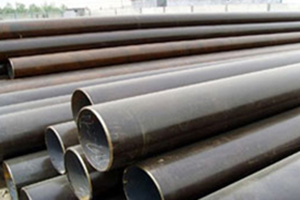Introduction
Stainless steel, a marvel of modern metallurgy, graces industries with its array of properties. Among the myriad of stainless steel grades, 410 stainless steel stands as a stalwart contender, boasting a unique blend of attributes that set it apart from its counterparts. In this comprehensive guide, we embark on a journey to uncover the advantages that make 410 stainless steel a compelling choice over other grades within the stainless steel realm.
Understanding the Diverse Landscape of Stainless Steel Grades
The world of stainless steel is marked by a dazzling array of grades, each with its distinct attributes and applications. From austenitic to ferritic to martensitic, each grade caters to specific needs. Amid this diversity, 410 stainless steel emerges as a versatile contender renowned for its unique advantages.
410 Stainless Steel: A Pragmatic Marvel
 410 stainless steel, a member of the martensitic family, boasts an optimal balance between corrosion resistance, mechanical strength, and machinability. This blend of attributes positions it as a pragmatic choice for a wide spectrum of applications where a combination of properties is required.
410 stainless steel, a member of the martensitic family, boasts an optimal balance between corrosion resistance, mechanical strength, and machinability. This blend of attributes positions it as a pragmatic choice for a wide spectrum of applications where a combination of properties is required.
Mechanical Strength and Wear Resistance: 410’s Forte
When it comes to mechanical prowess, 410 stainless steel stands tall. Its higher carbon content enables it to be hardened through heat treatment, resulting in impressive mechanical strength and wear resistance. This advantage makes it an ideal candidate for applications demanding durability and reliability.
Heat Treatment: Tailoring Properties to Perfection
The malleability of 410 stainless steel extends beyond its composition. Through heat treatment, engineers can tailor its properties to suit specific needs. By controlling factors like temperature and cooling rates, the alloy’s hardness, toughness, and other mechanical attributes can be finely tuned.
Corrosion Resistance: Striking the Balance
While not as corrosion-resistant as some austenitic grades, 410 stainless steel strikes a unique balance. Its moderate corrosion resistance, combined with its mechanical strength, makes it suitable for environments that demand both strength and resistance to certain corrosive agents.
Magnetic Attributes: A Unique Edge
Unlike austenitic grades, which are generally non-magnetic, 410 stainless steel exhibits magnetic properties. This attribute opens up possibilities in applications where magnetism is required, such as in components like solenoids and sensors.
Versatility Across Applications: 410’s Allure
The advantages of 410 stainless steel translate into a wide range of applications:
- Cutlery and Kitchenware: Its mechanical strength and corrosion resistance make it a staple in knife blades and utensils.
- Industrial Components: Pump shafts, fasteners, and valve parts benefit from its durability and wear resistance.
- Automotive Engineering: Exhaust systems and components requiring strength and heat resistance find their match.
- Medical Instruments: Surgical tools and dental equipment rely on its mechanical properties and corrosion resistance.
- Aerospace Engineering: Aircraft components leverage its strength and resistance to wear.
Comparative Analysis: Advantages Over Other Stainless Steel Grades
When compared to other stainless steel grades, 410 stainless steel offers a unique set of advantages:
- Austenitic Grades (e.g., 304 and 316): 410 excels in mechanical strength and hardness, making it suitable for applications demanding toughness and wear resistance.
- Ferritic Grades: While ferritic grades may offer better corrosion resistance, 410’s strength and hardening capabilities provide an edge in applications requiring durability.
Engineering Excellence: Fine-Tuning Material Selection
 The selection of stainless steel grade hinges on a comprehensive understanding of the application’s requirements. 410 stainless steel’s advantages shine in scenarios where a balance between mechanical strength, corrosion resistance, and other attributes is crucial. Engineers and designers can capitalize on its versatility to create components that withstand diverse challenges.
The selection of stainless steel grade hinges on a comprehensive understanding of the application’s requirements. 410 stainless steel’s advantages shine in scenarios where a balance between mechanical strength, corrosion resistance, and other attributes is crucial. Engineers and designers can capitalize on its versatility to create components that withstand diverse challenges.
FAQs About the Advantages of 410 Stainless Steel
Q1: Is 410 stainless steel suitable for marine environments?
While it may not offer the highest corrosion resistance for prolonged exposure to marine environments, 410 stainless steel’s balanced attributes can be suitable for certain marine applications.
Q2: Can 410 stainless steel replace austenitic grades in all applications?
While 410 stainless steel excels in mechanical strength, it might not be a direct replacement for austenitic grades in applications demanding exceptional corrosion resistance.
Q3: What factors should be considered when choosing between 410 stainless steel and other grades?
Consider the application’s requirements for mechanical strength, corrosion resistance, temperature resistance, and other relevant factors to determine whether 410 stainless steel’s advantages align with the project’s needs.
Conclusion
The advantages of 410 stainless steel unfurl as a tapestry of mechanical prowess, corrosion resistance, and tailored properties. Its unique composition and heat treatability position it as a pragmatic choice across a spectrum of applications, from culinary arts to aerospace engineering. Understanding these advantages empowers professionals to wield 410 stainless steel’s attributes strategically, carving out solutions that marry the alloy’s strengths with the demands of diverse industries.
